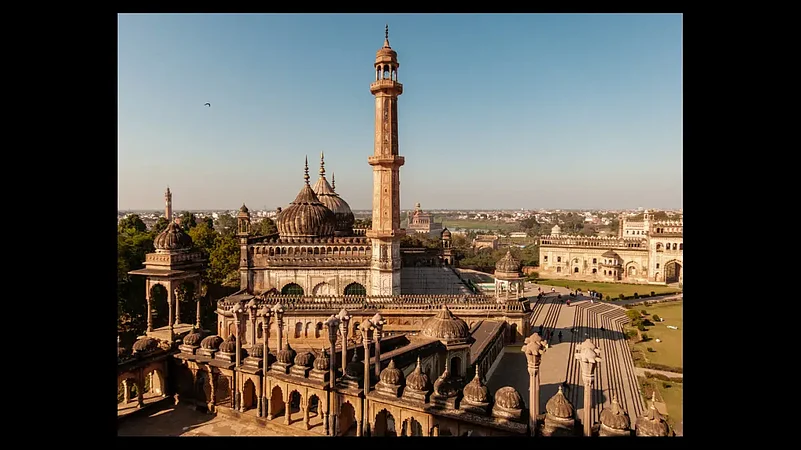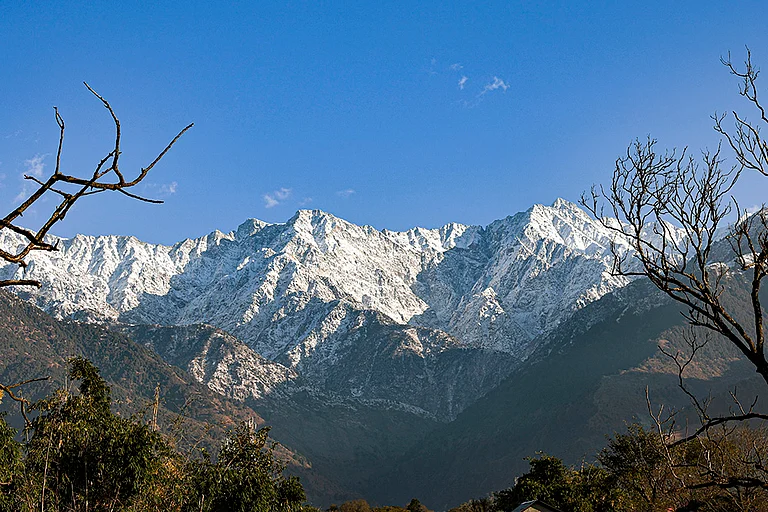Lucknow, the capital of the northern Indian state of Uttar Pradesh, is a city of many layers, with lots to see and experience by way of architecture, culture, food and shopping. Here are five things, especially if you have only a day to spare, which will help you gain an insight into the soul of the city known for its refined manners. Most of the attractions are in the older part of the city.
Bara Imambara and Chhota Imambara
Also known as the Asfi Imambara, the Bara Imambara was built on the orders of Nawab Asafuddaula of Awadh in 1775, to provide employment to his famine-stricken subjects. The four storied building has been hailed as an architectural wonder. The huge central hall has no supporting pillars. Galleries run within the building. It is here that you will come across the famous Bhool-Bhulaiyan or the labyrinthine passages; visit with an authorised guide because it is easy to get lost in this maze. Also located here is the Asfi Mosque and the Shahi Baoli. The Hussainabad Imambara or the Chhota Imambara was built sometime later by Nawab Muhammad Ali Shah. Its ornate design, collection of chandeliers and mirrors, and colourful stuccos are a photographers’ delight but do check with the local caretaker first if photography is allowed. Ticketed entry.
Along with the two Imambaras, you may also take a look at the Rumi Darwaza which displays a mix of Hindu-Muslim architecture and the Hussainabad Clock Tower.
The Residency

History may not have been kind to the Residency Complex in the heart of Lucknow but even in its ruined state, the place forms an interesting study in urban architecture. Constructed between 1775 and 1800, it was built for the British Resident General (a representative in the court of Nawab of Awadh). More buildings were added later. During the Indian Revolution of 1857, it bore the brunt of the attack by the rebel forces who had laid a siege to the complex after the British officers and their families had taken shelter here. Now maintained by the Archaeological Survey of India, some of the key structures which can be seen today are the Bailey Guard Gate, Dr Fayerer’s House, Sago’s House, Brigade Mess, Banquet hall, Kanpur Battery, Sikh Square, Cemetery, etc.
A building in the heart of the complex has been converted to the '1857 Memorial Museum'. A model of the Residency as it was before 1857 is kept here. Besides, display of photographs, lithographs, paintings, documents, period objects, etc. enlighten visitors about the Indian Revolution and life and times of the British occupants. The Museum is open on all days except Fridays, between 9am and 5pm. Bags have to be deposited at the cloak room near the ticket counter. Check at the ticket counter if photography is allowed. Documentary films are shown at the Memorial Museum at fixed hours between 10.30 am and 4.30pm. The complex is widely spread and requires some walking around if you want to see all the buildings and memorials. It is best covered in the early hours or late in the evening as the sun can be very strong during mid-day.
La Martiniere
The sprawling La Martiniere campus, dominated by the breathtakingly beautiful Constantia, an example of Indo-European hybrid architecture, will take a better part of a day if you want to see in its entirety. Some of the must see corners include La Martiniere Memorial Hall, the Blue Room (with its original painting by Johann Zoffany), the Trophy Room (with a rare painting of the Lucknow Residency), the College Chapel, etc. But remember it is a running educational institution and so permission is necessary.
It was Frenchman Major General Claude Martin (1735-1800) who ordered its construction in 1796 – probably as a garden house – but did not live to see its completion in 1802. Martin bequeathed the house and his wealth for the benefit of education, which led to the establishment of the schools and colleges in Lucknow, Calcutta and at Lyon (his birthplace in France).
Shopping in Lucknow
Among other things, Lucknow is known for its delicate embroidery art or ‘chikan-kari’ and a mind-boggling range of traditional perfumes or ‘itar’. Traditionally, the embroidery was done with white thread on white muslin or cotton but now it has been adapted to include various colours and fabrics. Be prepared to be dazzled by the range of perfumes and the bottles when you visit Lucknow’s famous ‘itar’ shops. Traditional markets such as Chowk, Aminabad and Hazratganj are the place to go shopping.
Food walk

No visit to Lucknow is complete without sampling the Awadhi cuisine. Although it traces its origin to the Mughal kitchens, the cuisine evolved in the royal kitchens of Awadh to have a distinct style and flavour of its own. Centuries ago, they introduced the ‘dum’ style of cooking, which the modern world is discovering as slow cooking. Some of the must try dishes include Lucknow Biryani, Kakori kebab, Galauti kebab (at Tunday Kebabi), Zarda, Sheermal, Nihari, etc.
If you are not a meat-eater, do not fret. Lucknow is also about vegetarian food, such as ‘satvik’ meal, various kinds of ‘chaat’ (including the basket chaat), ‘lassi’, ‘halwa’ and other varieties of sweets. The best way to round up any meal is with a ‘meetha paan’ (betel leaf loaded with myriad ingredients and served folded).
Tips: If you are visiting Lucknow for the first time or have little time in hand, it is best to opt for a guided tour. Uttar Pradesh Tourism organises regular walks, including the Kaiserbagh Heritge Walk and the Chowk Heritage Walk. Tornos India, a private enterprise, also offers a range of walks covering many facets of Lucknow


























